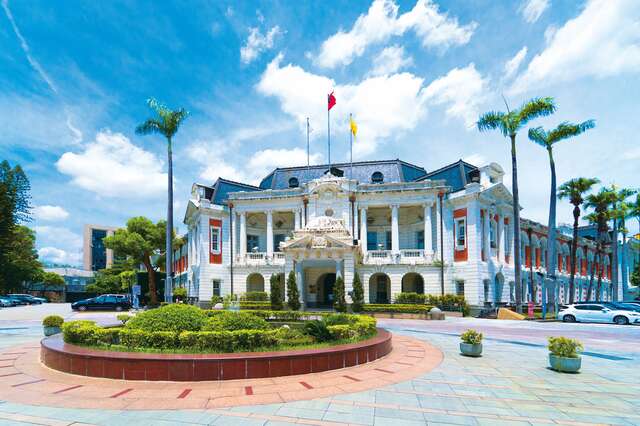Taichung Prefectural Hall Introduction
The history of Taichung City government construction began during the Qing Dynasty when Liu Ming-chuan was in power. During this period, the largest city wall in Taiwan was built in Taichung, originally intended to serve as the provincial capital and to control both north and south. After the cession of Taiwan in the Treaty of Shimonoseki, the Japanese military established the "Taiwan Civil Administration Office" within the office building complex at the northwestern corner of the city wall. Following changes in administrative structure, it was referred to by different names, such as Taichung City Hall and Taichung Office during the Meiji period. Construction of the Taichung Office building began in phases during the Taisho era, using this area as a development base, gradually dismantling Qing Dynasty offices from east to west to construct modern government buildings. The Governor's office was part of the "permanent office building" project during the Japanese colonial period, designed simultaneously with the original Taipei and Tainan governor's offices, and positioned as new constructions for the three top-ranked prefectures at the time. Alongside the Taiwan Governor's Office (now the Presidential Office), it represented a shift from temporary wooden structures to a matured phase of reinforced brick construction. This type of government building played a significant role in Taiwan’s architectural history. Compared with other preserved examples and sister projects, much of the original construction of the Taichung Governor's Office has been well-preserved, holding high historical significance and research value for modern architectural history, as it continues to serve as a local administrative center and represents regional historical events and changes. It is currently temporarily listed as a historical building. The Taichung Governor's Office began construction in 1912 and was completed in 1913 after the first phase, undergoing four expansions until its current scale was completed in 1934, designed by Moriyama Matsunosuke from Japan. The Taichung Governor's Office administered Taichung City, Changhua County, and Nantou County, while the Taichung City Office was the actual city government at the time. After World War II, the Taichung City government moved to its current location, and the Taichung Governor's Office has been designated as a city historic site. The overall design of the Taichung Governor's Office is in the style of French, specifically the Beaux-Arts style, featuring a distinct Beaux-Arts roof on the façade. The main structure is an L-shaped two-story building facing east, with a tower-like projection at the center, and "corner towers" on both sides to connect the wings of the building. The entrance hall on the first floor is adorned with Corinthian columns, while the second floor employs Ionic columns, with a recessed balcony enhancing the shadow effects of the façade. The design of the Taichung Governor's Office emphasizes its political status and importance within the city, in accordance with Taichung's urban planning, placing the main entrance at the corner of significant streets, a characteristic feature of government buildings during the Japanese colonial period.









































